Obar Dheathain

The glittering Granite City on the sun-drenched shores of the North Sea

If you drive north from Edinburgh you will reach Dundee before long, and if you weren’t put off enough by that you could drive another 65 miles up the road to Aberdeen, my home town. Located in the northeast of Scotland, Aberdeen had its beginnings in Roman times when it was called Devana. In 1167 Aberdeen was founded, consisting of Old Aberdeen on the banks of the River Don and Aberdeen itself on the banks of the River Dee. During its history Aberdeen has been granted land by Robert the Bruce, burnt down innumerable times, and affected by multiple epidemics. Nothing out of the ordinary for a Scottish city.
These days Aberdeen has the grand title of “Europe’s Oil Capital” owing to the concentration of oil companies and related organisations who have interests in the North Sea fields. Its heliport is the busiest in Europe and there has been a lot of wealth brought to the city. Consequently, house prices are high, and you don’t even want to know how much a pint on a Saturday night can be. Aberdeen is a great place though, there is plenty happening and it has a lot to offer tourists.
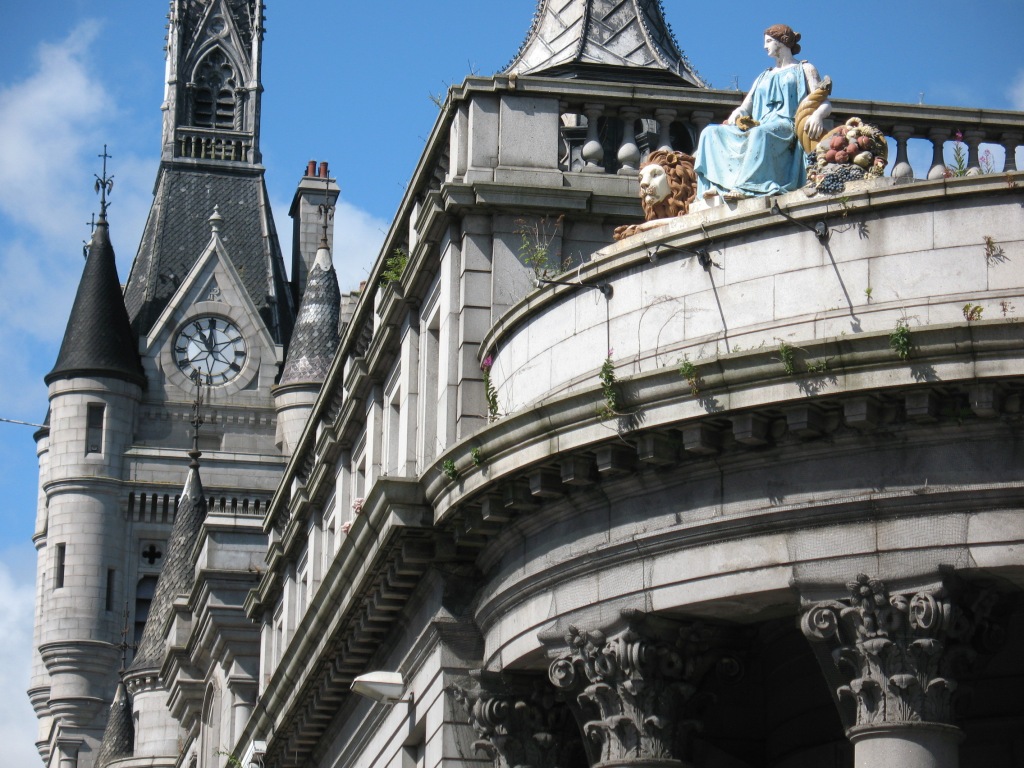
Aberdeen’s Town House with the clock tower in the background, and the statue on top of Archibald Simpson’s in the city centre.
The Castlegate is officially the very centre of Aberdeen (or so I’m led to belive) and it is where the townsfolk congregate on Hogmanay to bring in the New Year. In 2008 a local seagull made his name here, by repeatedly robbing a corner shop for bags of crisps. Maybe that’s him soaring above the bandstand.
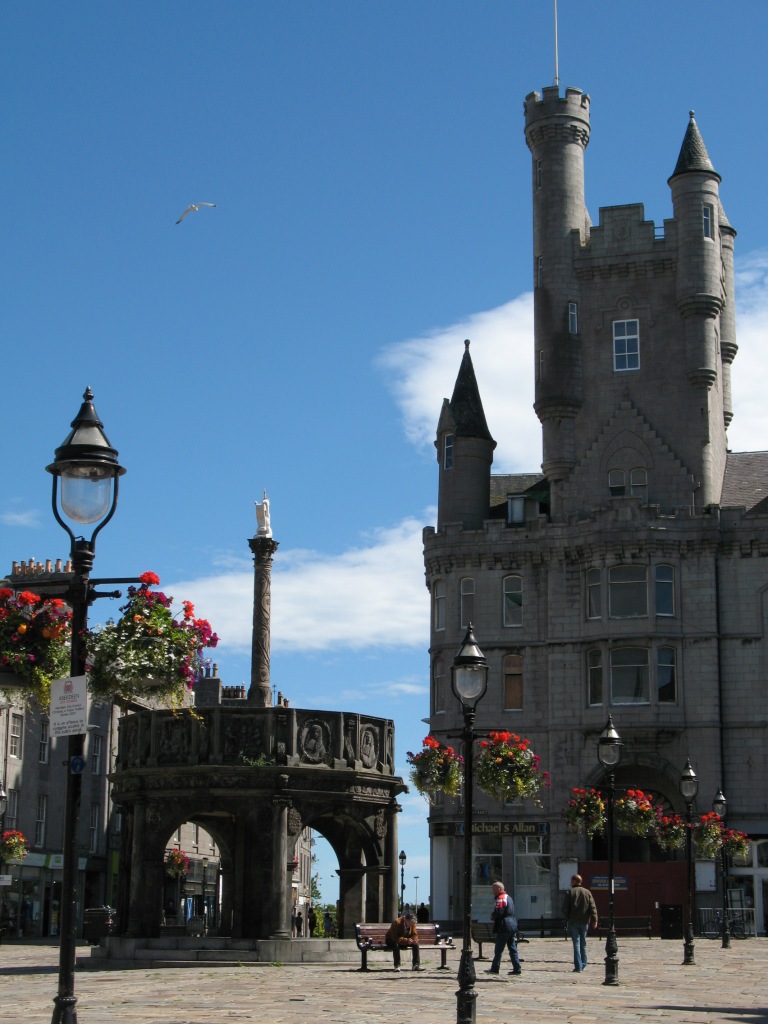

Aberdeen University forms the centrepiece for Old Aberdeen, most notably with King’s College and its distinctive crown-shaped tower. The University was founded in 1495. When Marischal College opened in 1593, there were as many universities in Aberdeen as in the whole of England.
This is Marischal College, which used to be part of Aberdeen University. It is the second largest granite building in the world (after the Escorial near Madrid), and is one of the most famous buildings in Aberdeen. Unfortunately, it was converted into the new home of the city council, at a time when swimming pools and sports centres were closing due to lack of funds.


William Wallace stands proudly outside His Majesty’s Theatre with his broadsword in hand. After Wallace was hung, drawn and quartered by Longshanks parts of his body were sent to the four corners of Britain as a warning to other possible traitors. Parts of him ended up in Newcastle, Berwick, Stirling, and Aberdeen itself. The statue had to be taken down and repaired in the 1990s as he was getting weak around the ankles from corrosion. Ironically, they took him to England.
The domed Cowdray Hall forms an extension to the Aberdeen Art Gallery, and is fronted by the war memorial.
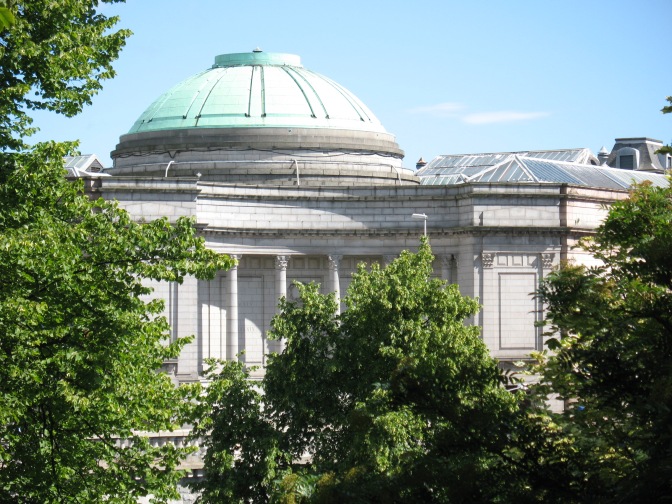
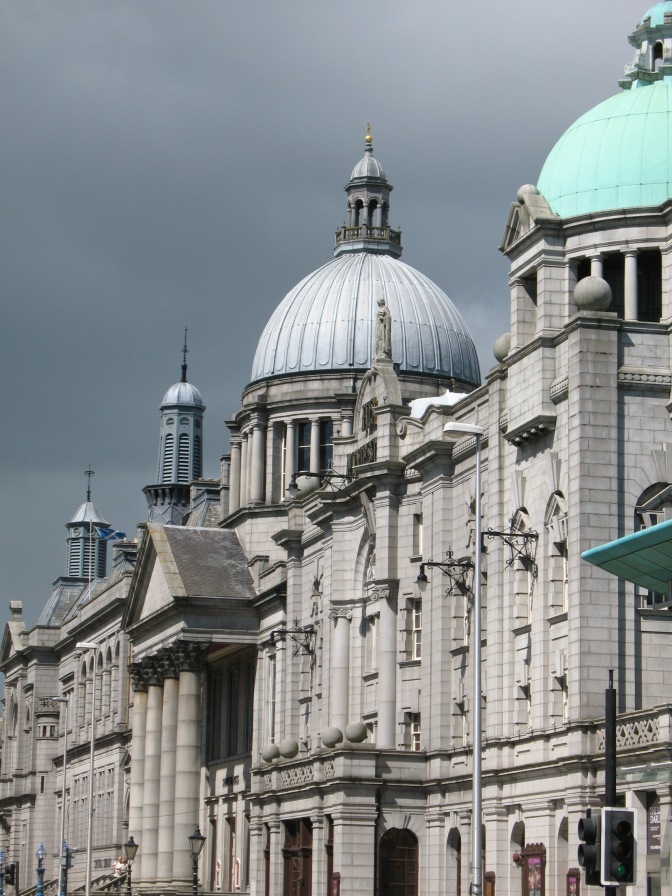
On Rosemount Viaduct stand three of Aberdeen’s grandest buildings; the Central Library, St Mark’s Church, and His Majesty’s Theatre. Puritans might quote these three together as “education, salvation and damnation”.
Leopards on Union Bridge, which connects the two halfs of Union Street, Aberdeen’s “Granite Mile”. The street was built to commemorate the union of Britain and Ireland and celebrated its 200th anniversary in 1994, with Europe’s largest street party.
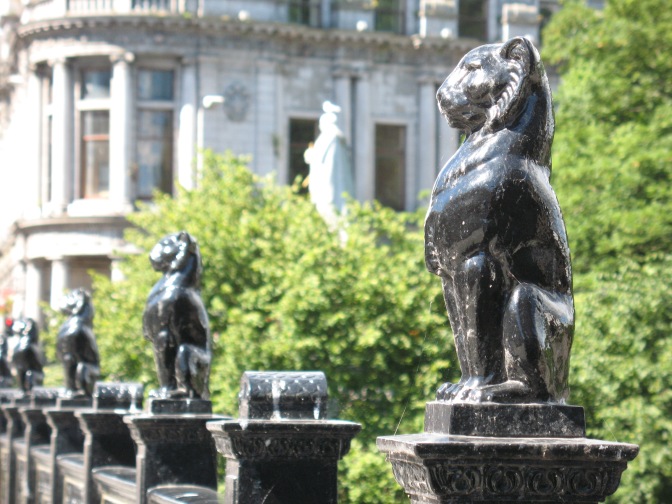
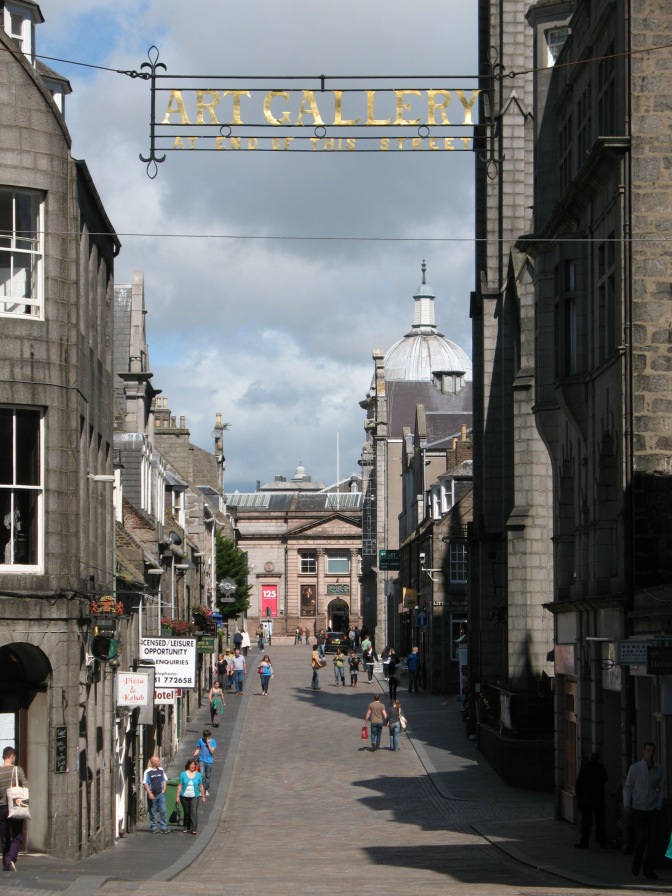
Belmont Street was gentrified in the early 2000s, in an effort to bring a bit of café culture to the city. The weather usually has other ideas, but it’s a good central location for grub during the day and bars at night.
On Schoolhill there still stands the house of James Dun, one of the late 18th century rectors of Aberdeen Grammar School, which used to sit across the road. That site is now occupied by Robert Gordon’s College, and ol’ Jimbo’s house is a café and salon.


The Aberdeen Art Gallery like all public museums in the 2000s is free of charge, and hosts travelling exhibits along with some stalwart permanent attractions. At the time of writing, the Lewis Chessmen were in residence.
Provost Skene’s House is one of few remaining medieval buildings in central Aberdeen. Built in 1545, it was purchased by Sir George Skene in 1669 and is now a museum.


The Maritime Museum is housed partly in the old house of Provost Ross, and in a fancy glass extension on Ship Row. It tells the story of Aberdeen’s close relationship with the North Sea, from fishing to shipbuilding to offshore oil rigs. There is a huge model of the Murchison platform in the foyer.
Aberdeen’s relationship with the oil industry is plain to see at the harbour itself, where supply boats chug in and out daily. It’s about 12 hours’ sailing to the central North Sea rigs. In the background you can see the granite tower of the Salvation Army Citadel.

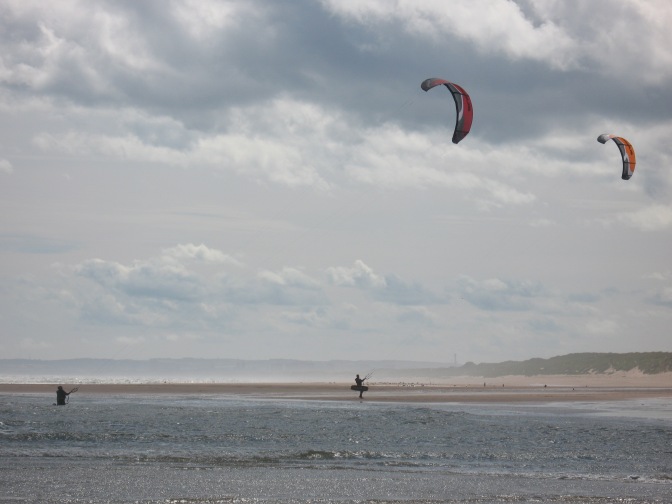
North of Aberdeen is the ten-mile stretch of pure sand that makes up Balmedie Beach. Even in summer the wind and cold water can be intimidating, but not enough to put off these kite surfers. It may get a bit more crowded once Donald Trump finishes off his golf course.
Union Square is the latest addition to Aberdeen’s portfolio of shopping centres, bringing in brands that the city has never seen before. Union Street itself is also great for shopping – especially if you want to buy a shop.
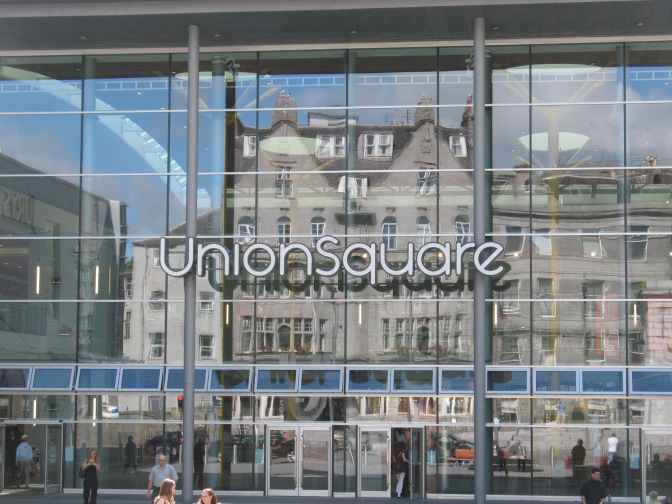

Another of Aberdeen’s shopping malls, the ex-flagship Bon Accord Centre, named after the city’s password in Jacobite times. Most of the big chain stores moved into the shopping centres during the mid-eighties which hit Union Street quite hard.
Up in the west end, and the number of flats that subscribe to Sky TV on Esslemont Avenue makes for a good picture.
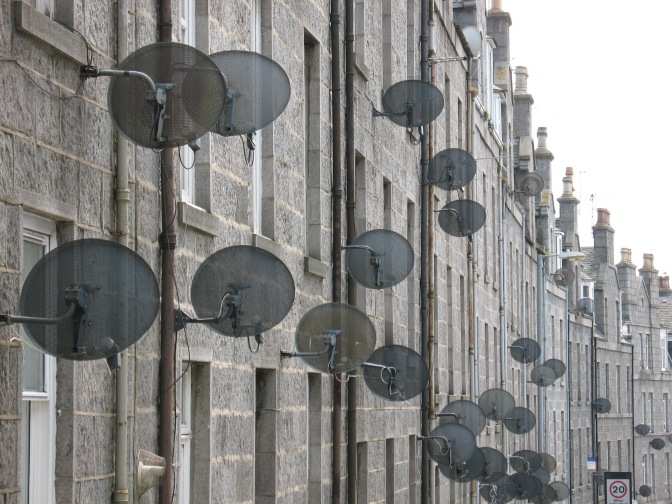

Bon Accord Crescent is another good example of Aberdeen’s Victorian terraced housing, curving gracefully opposite open parkland.
View of Marischal College again, this time from afar at the top of Rubislaw Den North, one of Aberdeen’s fanciest streets.
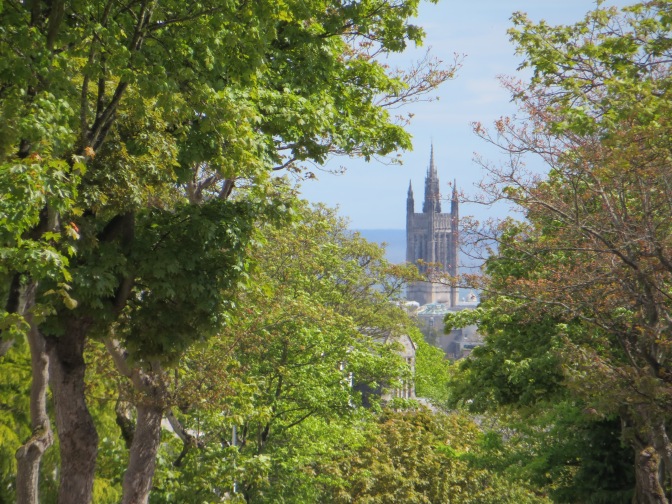
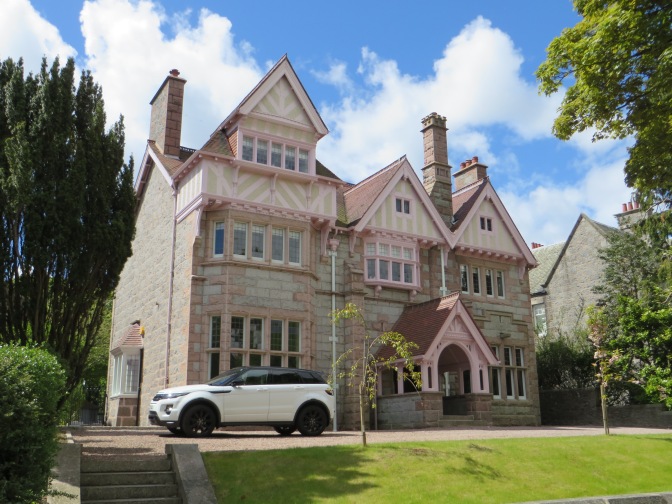
At the bottom of Rubislaw Den North stands this handsome pink house, one of the stateliest in Aberdeen and returned to its former purpose as a single residence in the early 2010s.
This was the house of George Washington Wilson, a famous Aberdonian who spent his time taking pictures in the late 19th early 20th century. His work is the most complete record of Aberdeen in the Victorian era. His house is now a bank.
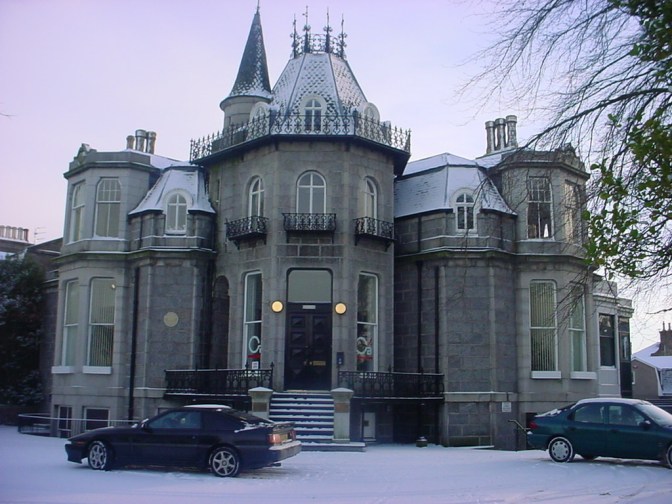
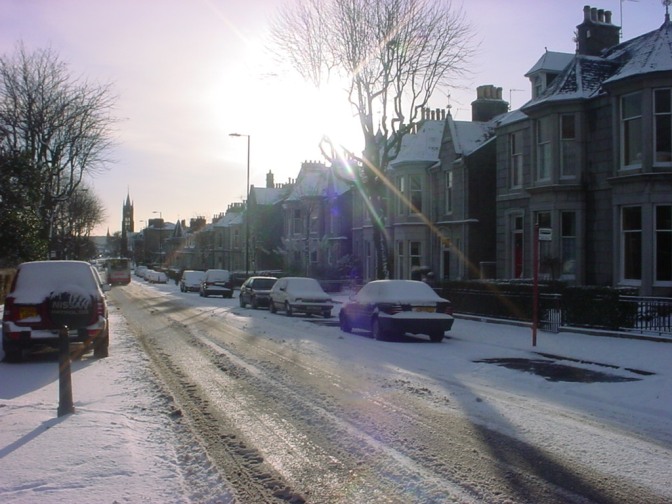
View of Fountainhall Road looking towards Rubislaw Church and Queen’s Cross. Although one of the drier parts of the UK (really!) Aberdeen is cold enough to get a significant snowfall most winters.
I spent six years of my life at Aberdeen Grammar School. It is actually a state school like any other but retains the name to preserve its history. AGS was founded sometime prior to 1256, but no-one’s really sure. The successive list of Rectors since 1479 is known. The current building was heavily damaged by fire in 1986, after which the interior was redesigned and rebuilt to modern standards.

Created 2001 | Updated 2015
